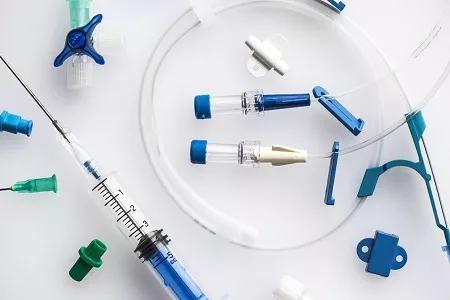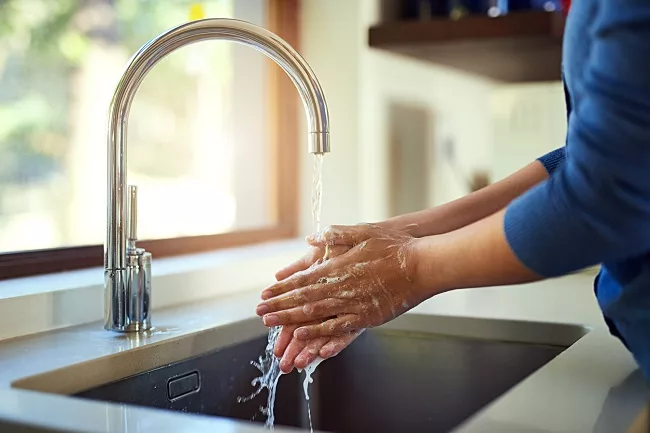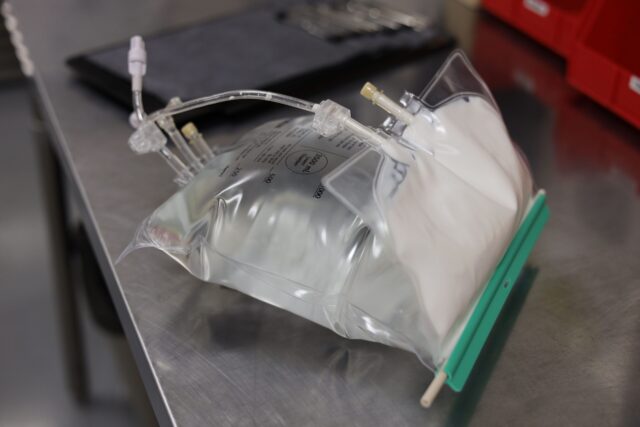Having and caring for a central line is an essential part of many medical treatments. Yet, it’s natural to have questions and concerns, especially if you’re new to the process. We aim to give you the knowledge and confidence to ensure you or your loved one receives the best possible care.

In this blog, we’ll break down the basics of central lines, including the different types, daily care tips, and how to address potential issues. Additionally, we’ll address frequently asked questions to further assist in your central line care journey. The path might seem challenging at first, but with Nutrishare by your side, you’re in capable hands.
What is a Central Line?
A central line, also known as a central venous access device (CVAD) or central venous catheter (CVC), is a soft tube, or “catheter” placed in a large vein. Placing a central line enables various medical treatments, such as administering fluids, medications, parenteral nutrition, blood products, and more.
Types of Central Lines
Central lines come in different forms, each designed for specific medical purposes and uses. A central line, such as a CVC or a peripherally inserted central catheter (PICC), is often used for TPN because it allows for the infusion of TPN solutions into larger veins. Most home TPN patients will have one of the following central lines:
Tunneled Catheters
Tunneled catheters are a type of central line that is passed, or tunneled, under the skin to an insertion site. The insertion site is an incision made in the vein where the catheter is placed. The exit site is where the catheter comes out of the skin. One to three tubes (lumens) may hang outside the exit site. A tunneled line also has a cuff that is inserted under the skin, and with time tissue grows around the cuff to anchor the line and prevent dislodgement.
Implanted Central Lines
Implanted central lines are also called implanted vascular access devices or ports. The port consists of a reservoir surgically placed under the skin. A catheter then runs from the reservoir into a central vein. The port is accessed using a special needle that goes through the skin in the reservoir. Your port can be a single or double-lumen.
Catheter Care to Prevent Infection
Proper catheter care prevents infections and ensures the device functions properly. It’s essential to clean the area regularly, avoid tugging, and use protective measures to keep the catheter secure and free from contaminants.
The following best practices will help keep your catheter site clean to prevent your risk of infection.
- Good hand hygiene is the most critical step in reducing the likelihood of an infection. Wash your hands with soap for 20 seconds using a vigorous scrubbing motion.
- Dry your hands with a paper towel and avoid touching other surfaces/items if you are to work with your central line.
- Alcohol sanitizer is an acceptable alternative if soap and water are unavailable and the hands are not visibly soiled.
- Inspect the site daily and observe for damage or signs of infection.
- Daily care of the central line site should focus on keeping the exit site and the area under the dressing clean and dry.
- Do not use anything sharp around the catheter to prevent it from getting damaged.
- Do not let anything pull on the catheter, as it may become dislodged.
- Change your dressing weekly or if it becomes soiled, wet, or loose. Discuss the products that you need for dressing change and the steps involved with your care team.
- The central line must be flushed with Sodium chloride 0.9% (normal saline) at least once a day, using pulsatile flush technique to prevent sluggishness or clotting.
- Heparin flush can also prevent clots from forming in the tip of the catheter.
- The catheter cap (hub, end adapter) should remain securely screwed onto the catheter. Disinfect the cap (s) every time before using it.
- The cap(s) should be changed every seven days or as needed. Always clamp the catheter (if applicable) before removing the cap.
Catheter Problems: Troubleshooting
Identifying signs of catheter issues early is crucial. Here are a few serious issues to keep an eye out for:
Clotted Catheter
If it is difficult to flush the catheter with normal pressure, check to ensure it is not kinked, twisted, or clamped. Do not use excessive force to flush. If you cannot flush, there may be a clot present. Contact your healthcare team for assistance.
Leaking from the Catheter
A break or cut may develop in the catheter or hub. If blood or fluid leaks from the catheter, clamp the catheter between the leakage site and the body. Cover the break with sterile gauze and tape it to the chest. Notify the healthcare team immediately and go to the hospital.
Catheter Displacement
If the catheter is accidentally pulled out, apply pressure to the site with sterile gauze. Notify your physician and go to the hospital.
Catheter Infection
If any of the symptoms below occur, call your healthcare provider immediately.
- Redness, swelling, tenderness, and drainage at the exit site or along the tunnel.
- Chills, fatigue, or a decrease in activity
- A temperature of 100.5°or higher, or lower than normal temperature
Blood Clot
A blood clot in the vein where the catheter is placed can block blood flow. Symptoms of a blood clot include pain, swelling, or numbness in your arm or neck on the same side as your catheter.
Call your healthcare provider right away if you experience any of these symptoms.
Air in the Catheter
If you experience shortness of breath or chest pain, you could have air in the catheter. This is an emergency. Clamp the catheter and lay on your left side with your head lower than your feet. Call 911.
Catheter Care – the Key to Maintaining Your Health
Attentive catheter care is critical to ensuring your safety and comfort.
Remember, you’re never alone on your home TPN journey, and collaboration is key. If you ever have questions, concerns, or need guidance, don’t hesitate to reach out to a healthcare professional or your Nutrishare clinician by phone 1-800-466-3876, or online. We are here to support you every step of the way. Your health and well-being are our top priorities, and we’re committed to ensuring you have the information and assistance you need for a safer experience on home TPN.




